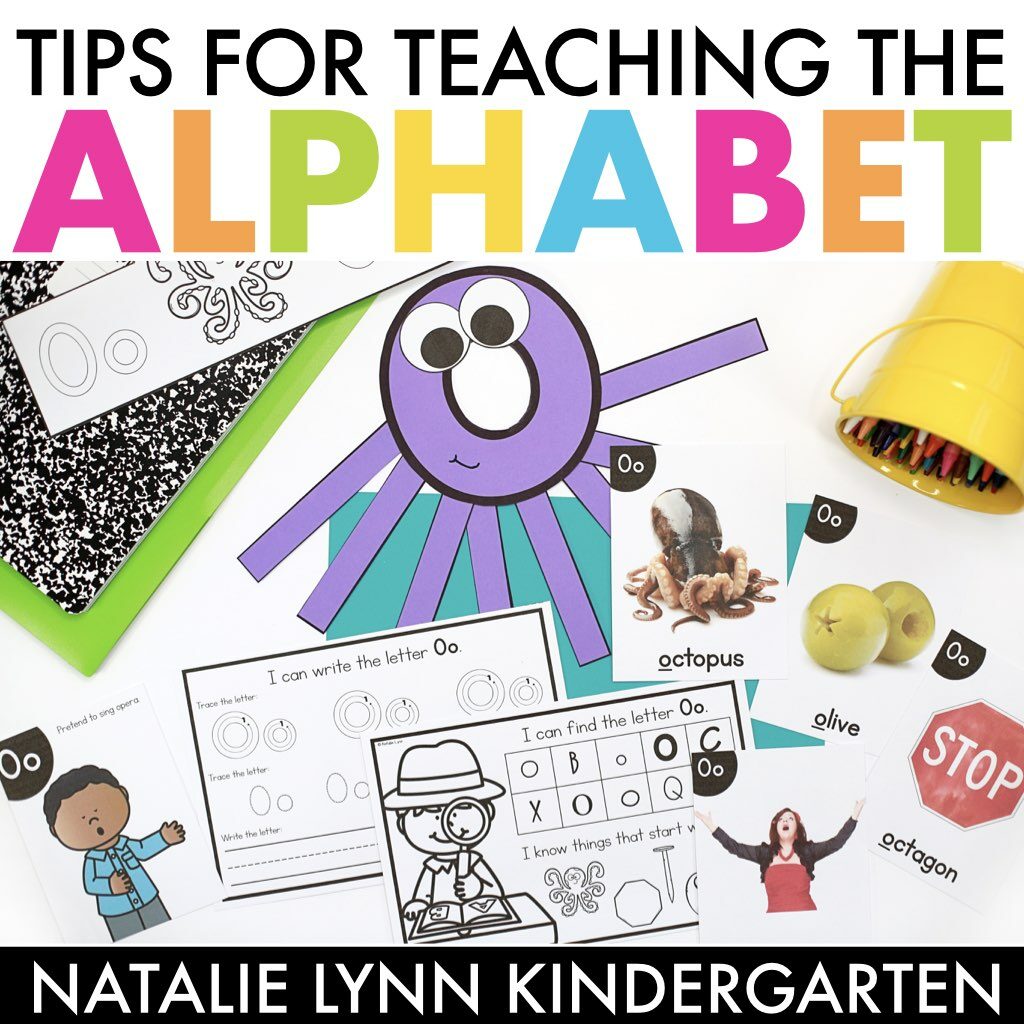
When it comes to teaching the alphabet in Kindergarten, it can still feel a little bit like throwing spaghetti at the wall. You try all the things hoping that one of them is the best way to teach the alphabet in Kindergarten and make it stick.
It doesn’t have to be that way, though!
These 6 tips for teaching the alphabet are tried and true for helping your kindergarteners learn the alphabet and letter sounds.
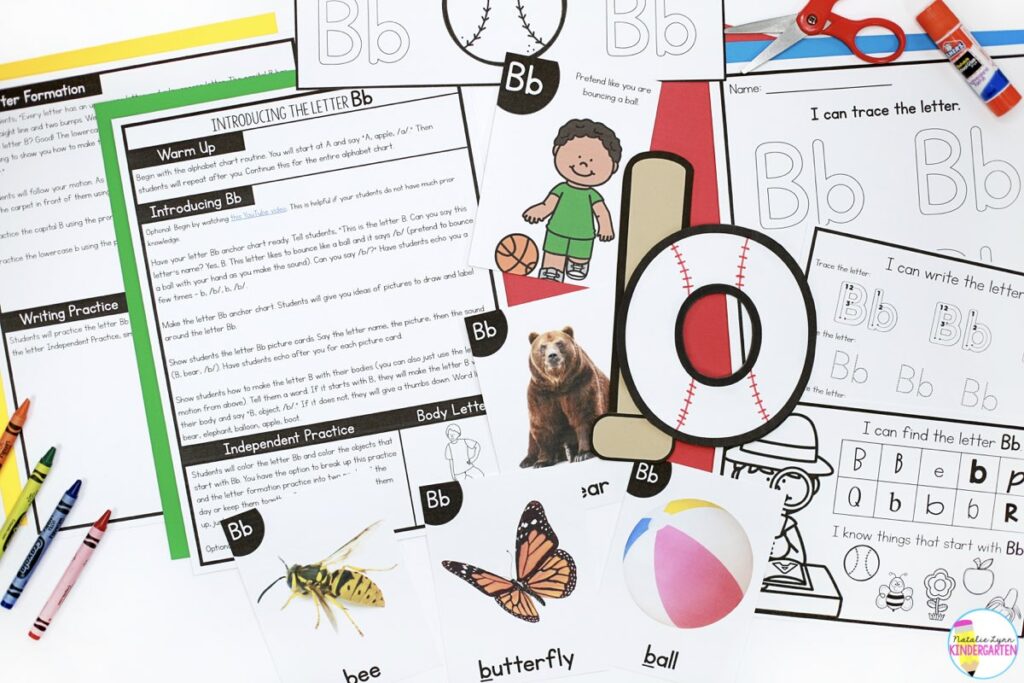
1. Introduce Letters By Their Sound
When it comes to reading, it’s important that students have a strong connection between a letter and its sound. We want our students to recognize that print represents sounds, and the best way to do that is to teach letter sounds first.
You might be thinking – how does that even work? How do I teach the letter sounds when I haven’t even shown students the letter yet?
Here’s what this looks like in my classroom:
When I introduce a new letter, I say, “We are learning a new sound today. That sound is /b/. Can you say /b/? /b/ like a bouncing basketball. Can you say /b/ as you pretend to bounce a basketball? B-b-b.”
Then, after we practice the sound, I teach the alphabet letter, “We spell the sound /b/ with the letter Bb. This is what a Bb looks like.”
Super simple, but this has a huge impact on students learning the alphabet!
This then leads into my next tip:
2. Use Real Photos Whenever Possible
If you have students who are English Language Learners or have a language delay or low background knowledge (and you most likely do), then using real photos to introduce vocabulary is essential.
However, using real photos to when teaching the alphabet in Kindergarten is beneficial to all of your students!
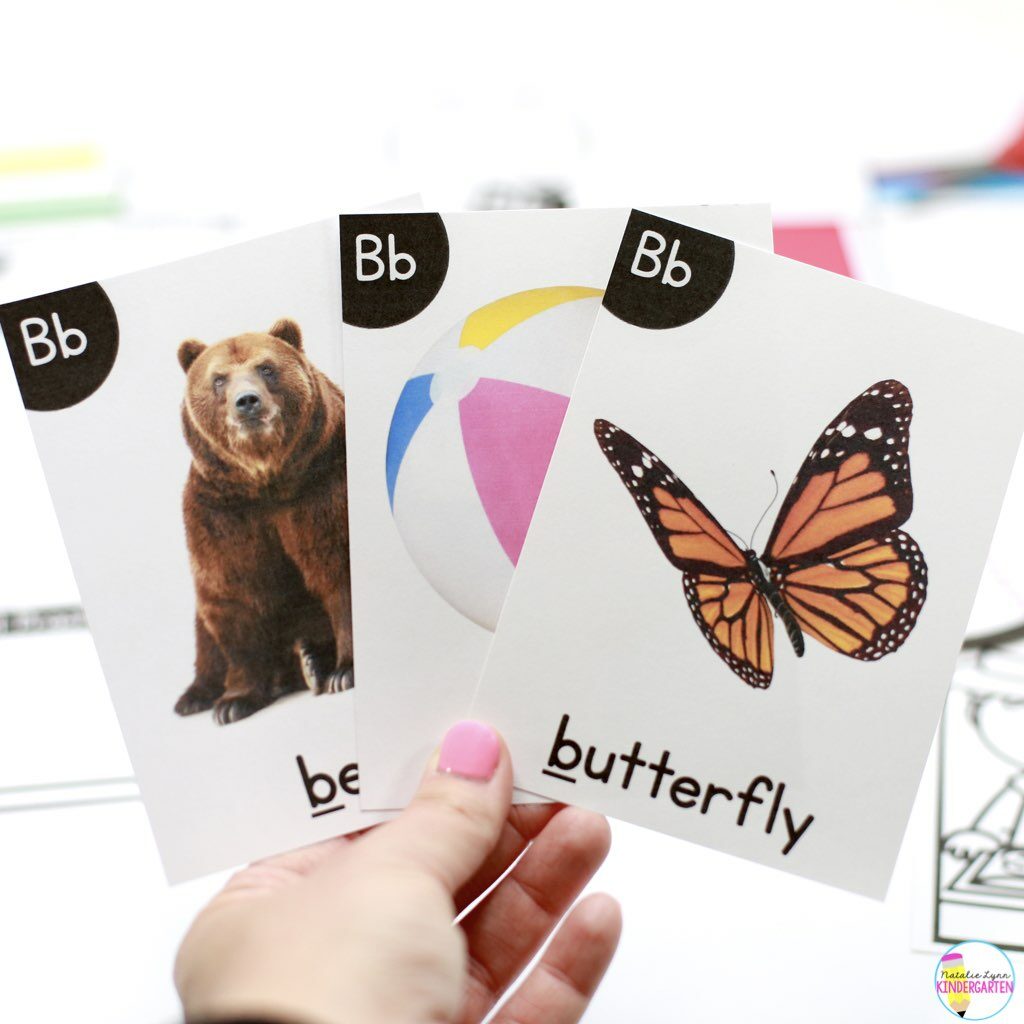
Reading text is not something that comes naturally to humans. Our brains are wired to remember images. So if students can connect a word to a real image, it’s much easier for their brains to make a connection.
After introducing the letter sound and letter, the next step for teaching the alphabet is introducing vocabulary words that start with that letter.
In my kindergarten classroom, this looks like: “This is a bear. Bear begins with /b/. Do you remember how we spell /b/? That’s right, Bb! Repeat after me – B, bear, /b/.”
We repeat that with multiple pictures and vocabulary words that begin with the target letter.
3. Use a Multi-Sensory Approach
When teaching the alphabet in Kindergarten, it is important to incorporate as many parts of the brain as possible to help build those connections.
One easy way to do this is to add in alphabet hand motions! And if you can make those alphabet motions cross the midline, even better.
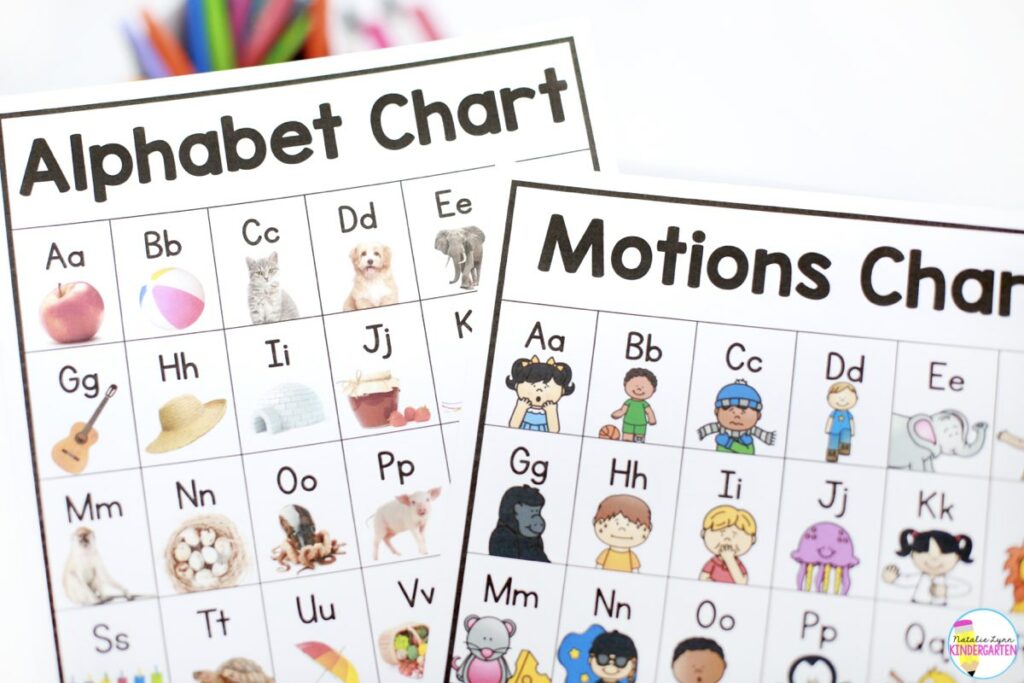
Our alphabet hand motions relate the the letter sound. For example, when we learn the letter Bb, we say /b/ while bouncing a ball.
Make sure that the alphabet motions that you choose are meaningful to your students. You wouldn’t want students to make yak horns while saying the /y/ sound if they’ve never seen a yak before!
When we go through our alphabet chart routine during our morning meeting, we make the alphabet hand motions as we say each letter sound.
4. Expose Students To a Variety of Fonts
When teaching each letter of the alphabet, of course we want properly-formed, printed letters.
But students won’t always see letters that way in the real world, and it’s important that they are able to recognize a letter no matter what form it’s in.
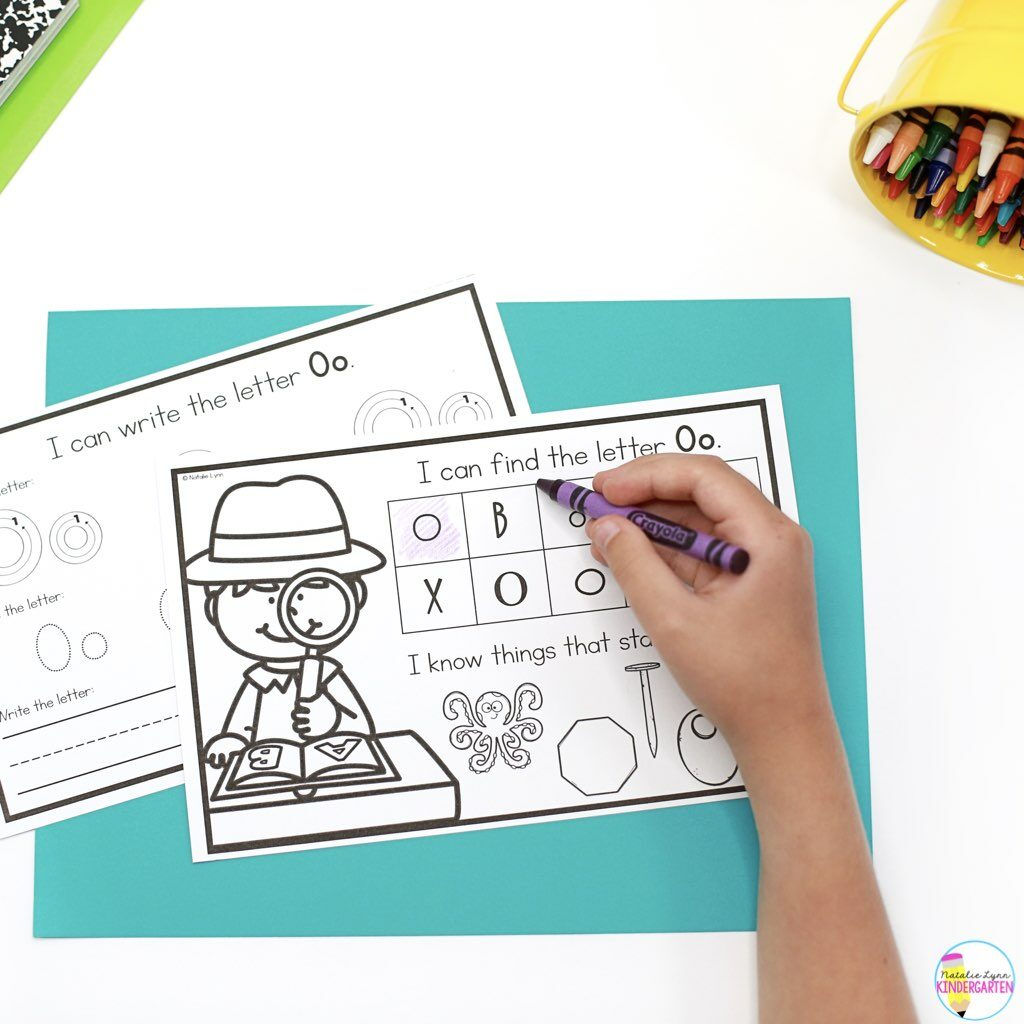
Font sorts, magazine hunts, and coloring by letters in a variety of fonts are all great activities for exposing students to the alphabet in a variety of forms.
5. Explicitly Teach Letter Formation
Depending on who you’re talking to, you’ll most likely hear differing opinions on whether or not you should spend time teaching proper letter formation.
Do students really need to know how to form letters properly? Is it developmentally appropriate to teach letter formation?
Here’s why I say wholeheartedly YES! Spend the time teaching letter formation!
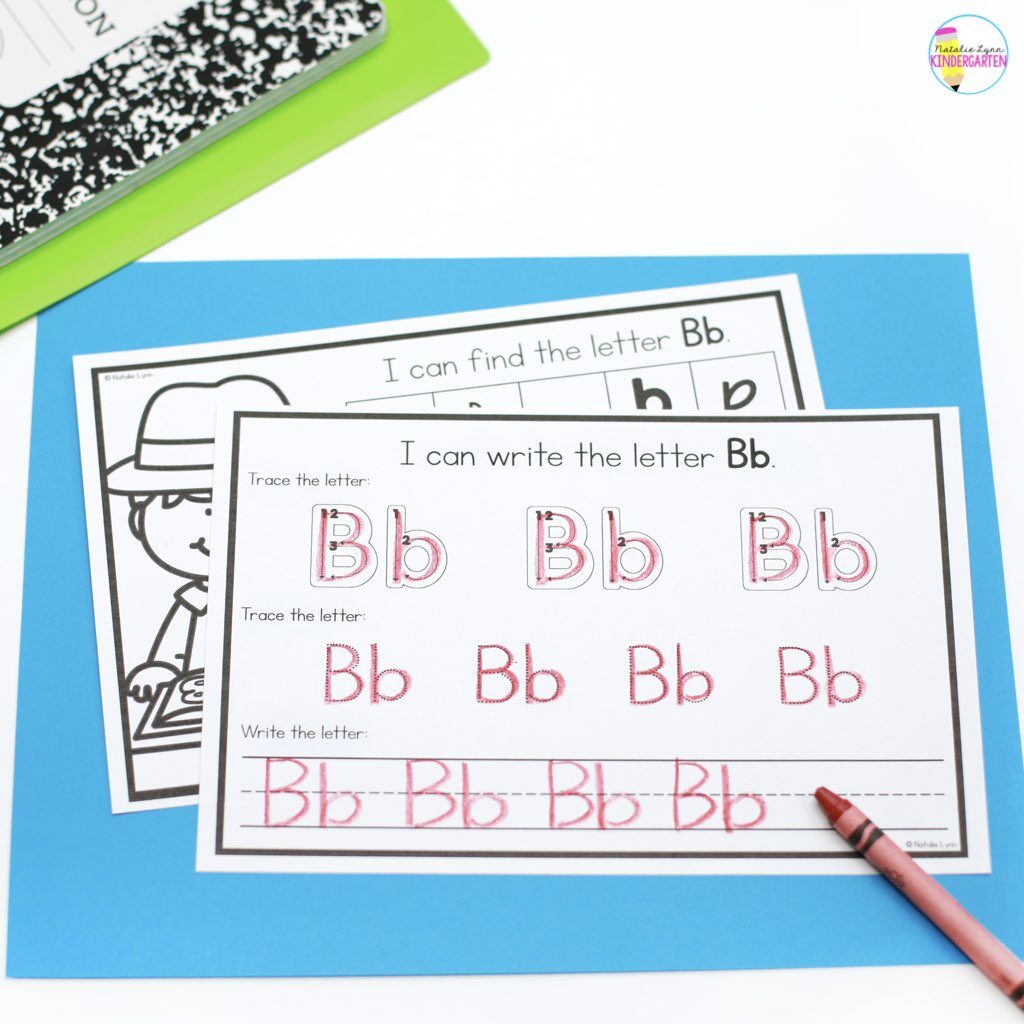
As our students learn letter sounds, we want them to begin using that sound knowledge in their writing.
If we work on handwriting and letter formation up front, students have time to build their muscle memory. That means, as they’re writing, they don’t have to dedicate brain energy to “How do I form this letter?”
Instead, they can fully concentrate on sounding out words.
This is also why you should carefully consider the order you introduce your letters in.
There are many different opinions on what order to teach letters in Kindergarten, and you can choose the best way for you and your class. However, you will want to make sure similar letters are spread out enough that students can gain mastery of one before adding in the next (think b, d, p, q).
6. Make It Fun!
We know that having routine, systematic phonics instruction is best practice. But that doesn’t mean it has to be boring!
There are many ways to make teaching the alphabet in Kindergarten fun for both students and yourself, including many of the tips listed above.
We love alphabet crafts when we are teaching letters and letter sounds in Kindergarten! These crafts are a great way to incorporate fine motor and cutting practice, listening and following directions, as well as helping students make a connection between the letter and beginning sounds.
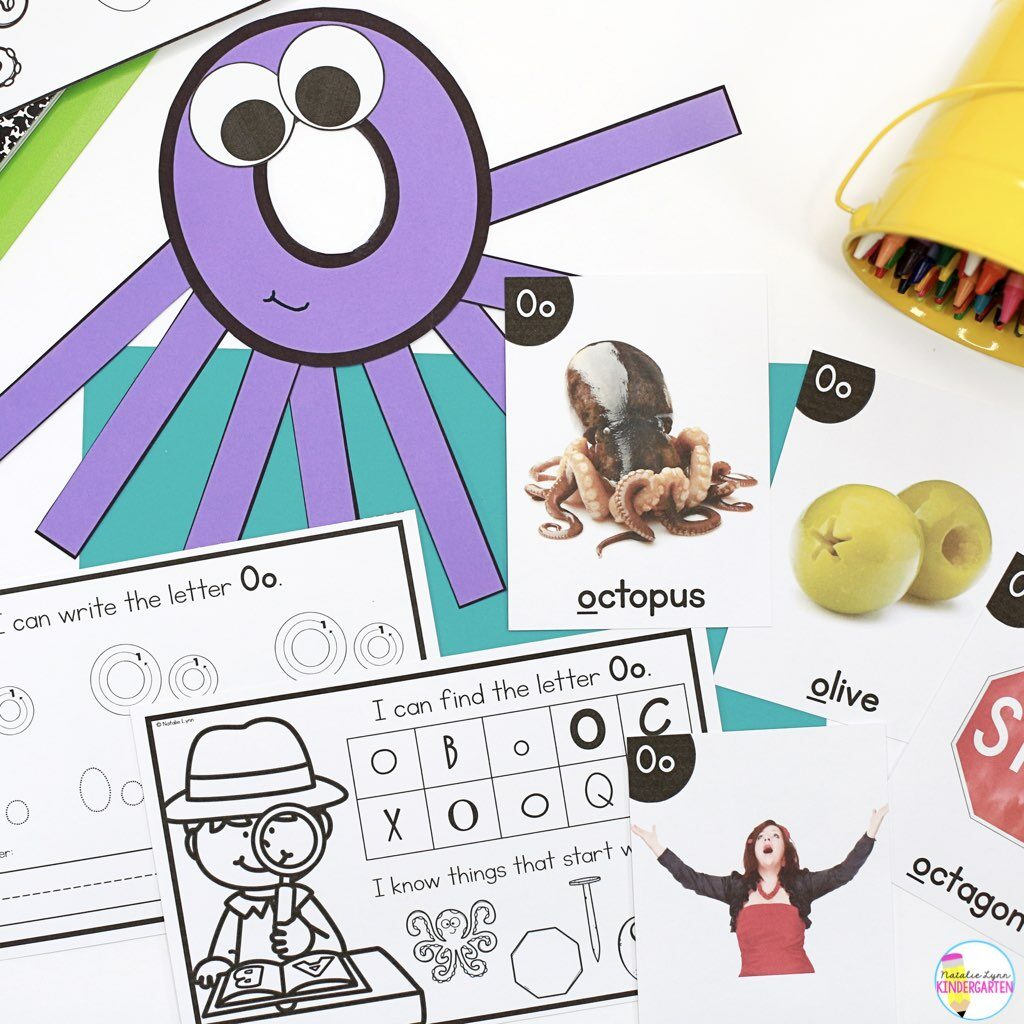
Alphabet interactive notebooks are also a favorite in my classroom. These notebooks are simple and no prep for me, but they are fun for my students and allow them to work with the target letter in many different ways.
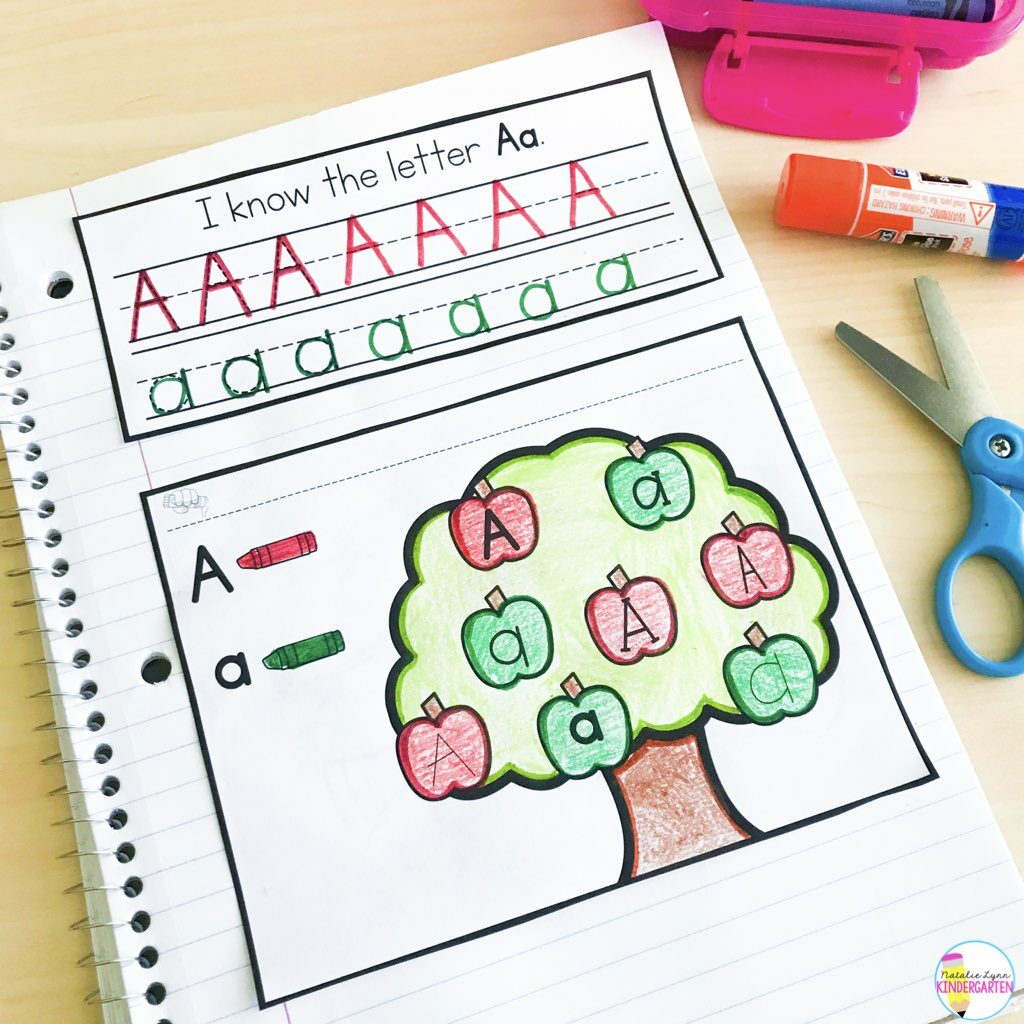
Teaching The Alphabet in Kindergarten
Are you looking for an easy to follow resource for teaching the alphabet in Kindergarten that’s developmentally-appropriate and effective? You can find it all in Empowering Little Readers™ Phonics Unit 1: introducing Letters.
This unit has everything you need to teach the alphabet in Kindergarten including:
- Scripted, easy to follow lesson plans
- Real photo materials
- Alphabet motions
- Alphabet crafts
- Worksheets and printables
- Letter formation practice
- And more!
Danielle W. said, “My students loved this and I noticed a big improvement in letter recognition and letter sounds. One kiddo went from knowing 0 to 20 letter sound in a few short weeks.”
If you want an entire year of systematic, effective phonics instruction planned out for you, you can grab the Empowering Little Readers™ Phonics Curriculum here.
Pin this post for later:
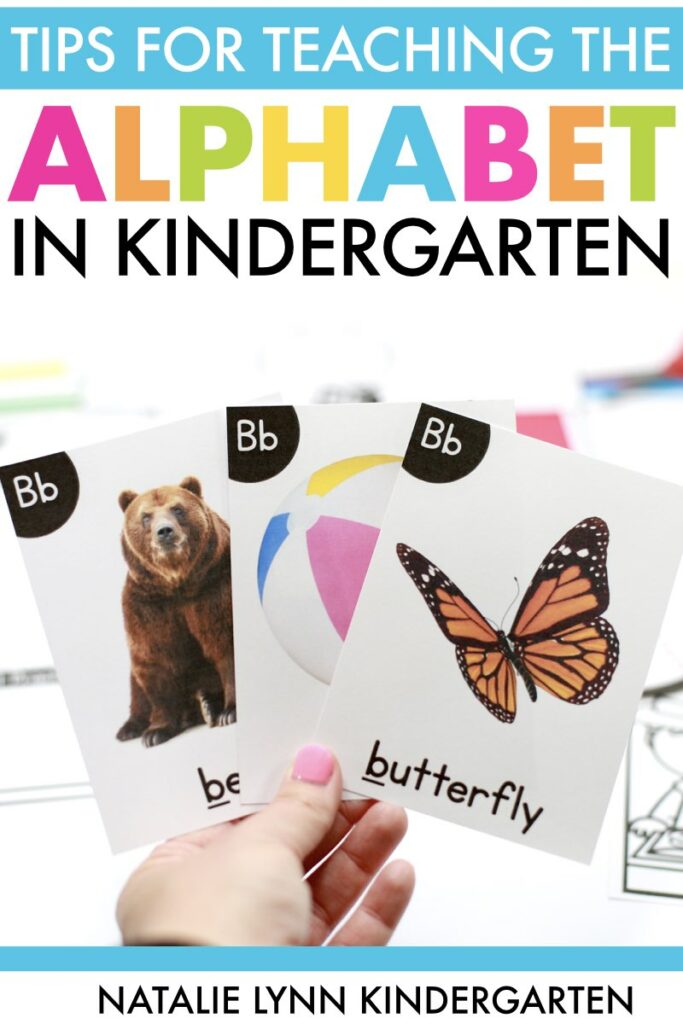

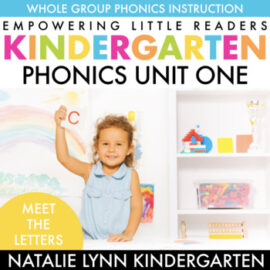
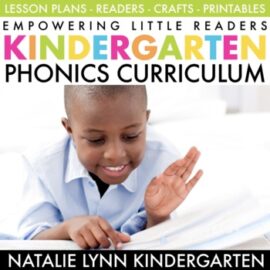


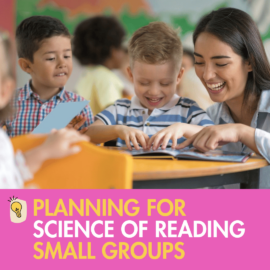
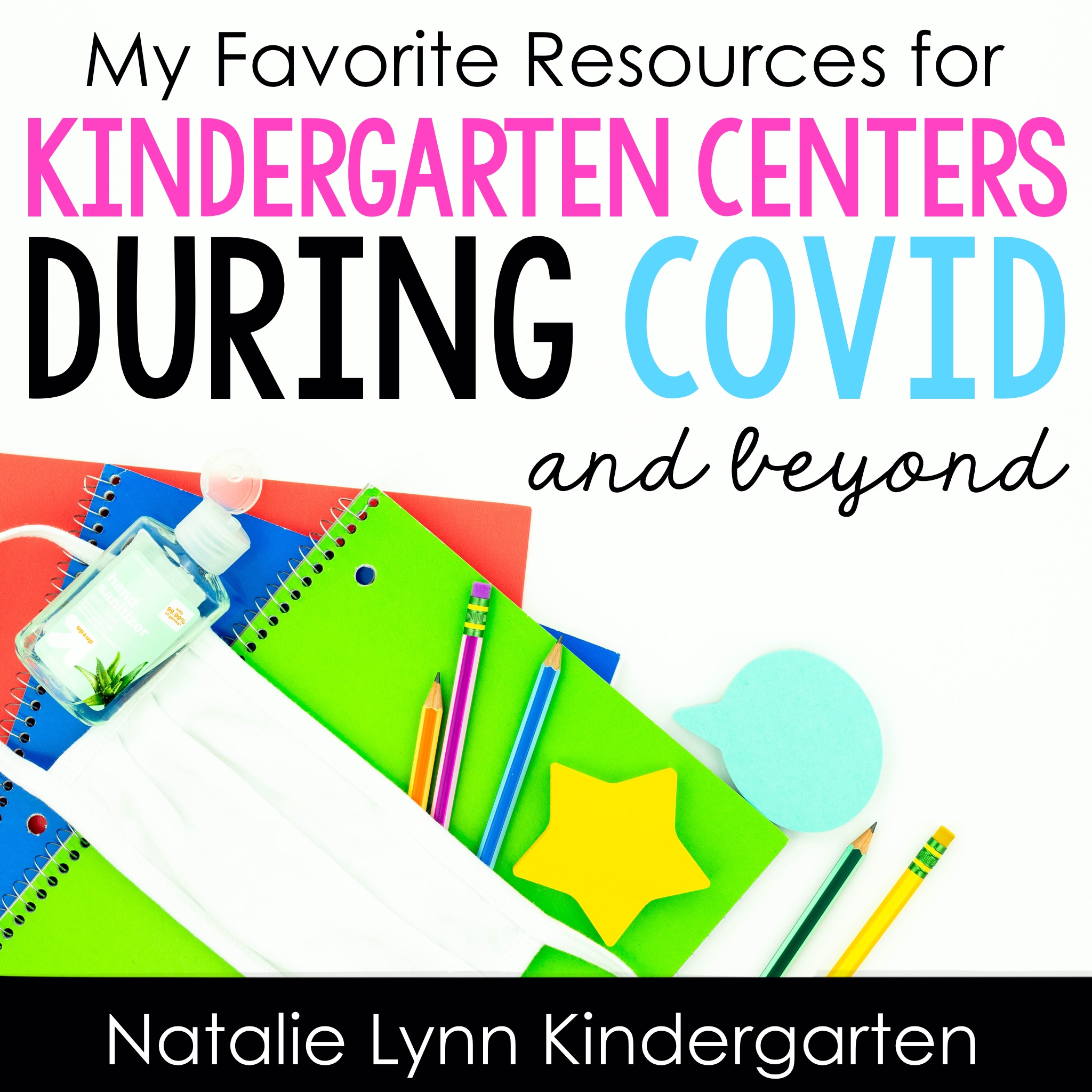

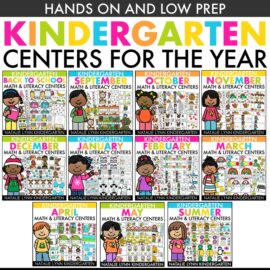
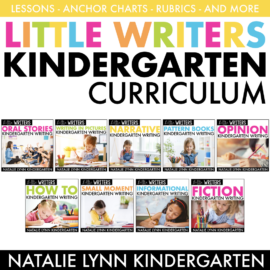
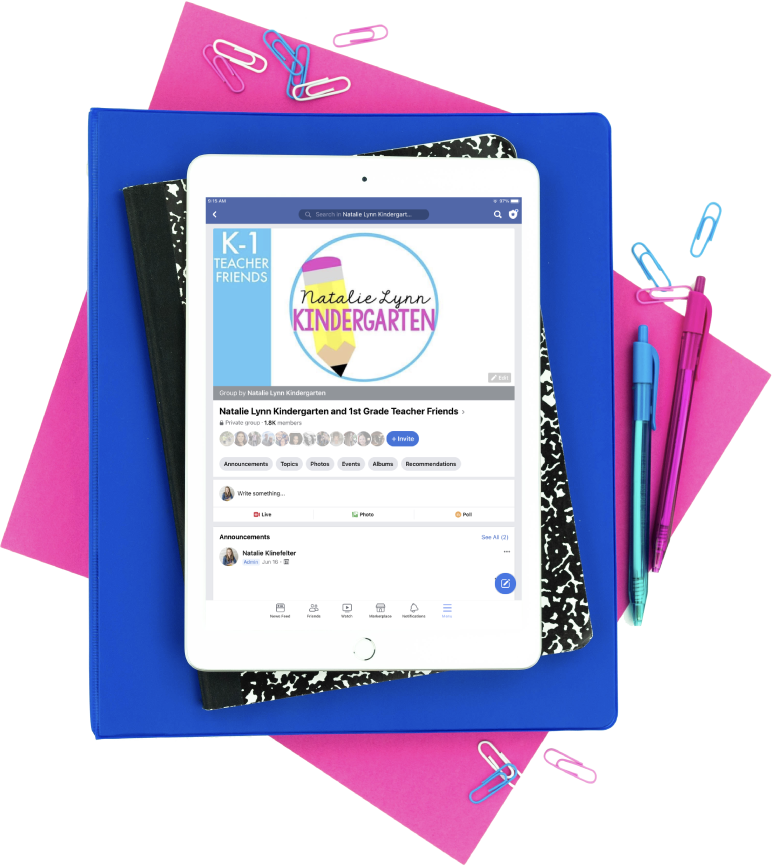

I just learned in LETRS training that knowing letter names, not sounds, is a big indicator of future success in reading. According to LETRS, the first 6-8 weeks of kindergarten should be dedicated to teaching letter names and them move on to letter sounds.
Hey there! I’ve gone through LETRS training as well. I agree that it’s important to emphasize letter naming first, which is why it’s the big focus of unit 1 of my phonics curriculum before we move heavily into sounds in unit 2. However, the research does support teaching letter sounds in conjunction with letter names. Introducing the letter as how we spell the sound helps build connections in the brains. I definitely think we need to think critically and look at multiple sources of research and then base our instruction on that.
Thanks. My school currently uses a curriculum that has a very heavy emphasis on letter sounds in kindergarten and many students go into first and beyond without knowing letter names. I
Thanks. This is helpful. I am sharing your sight with many Kindergarten teachers. My school currently uses a curriculum that has a very heavy emphasis on letter sounds in kindergarten and many students go into first and beyond without knowing letter names.